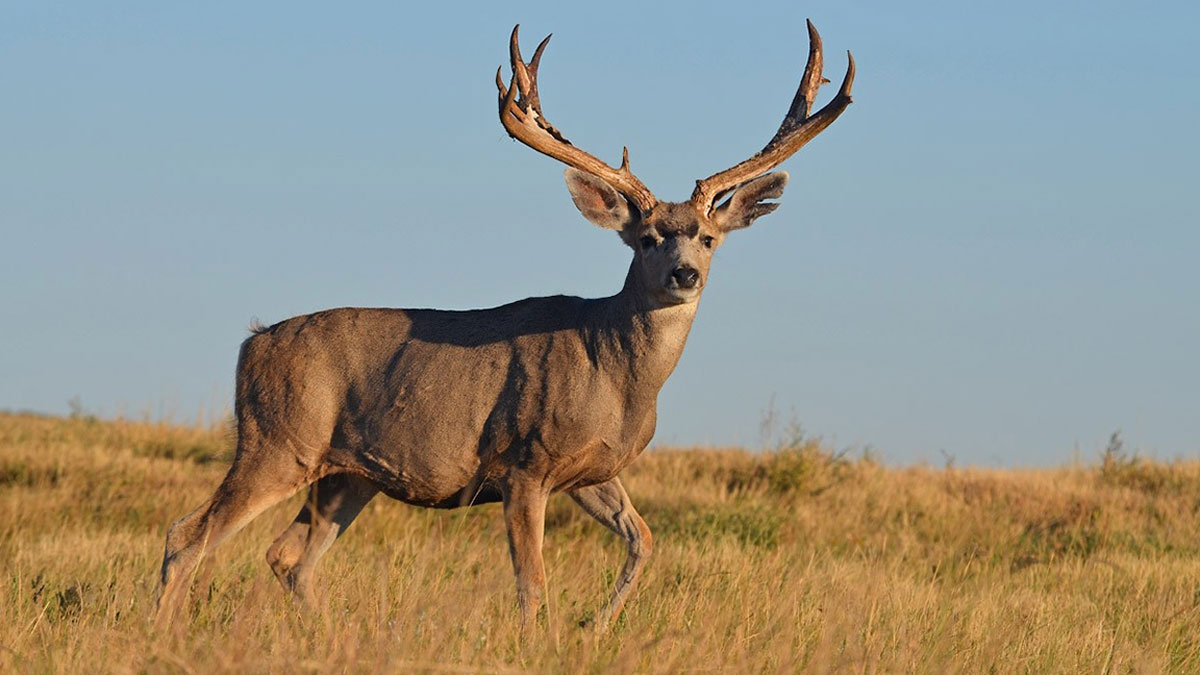Below is a news release from Colorado Parks and Wildlife.
Applying sufficient hunting pressure may be the key to managing chronic wasting disease in mule deer, especially early in outbreaks when the disease is scarce. But reduced harvest prescriptions aimed at growing mature male deer will accelerate the growth of epidemics. These are the main findings reported by Colorado Parks and Wildlife scientists in a new peer-reviewed article published online in the Journal of Wildlife Diseases.
The new paper summarizes an analysis of data from Colorado mule deer across 12 hunting areas, gathered over nearly two decades (2000-2018). Areas with the largest declines in annual hunting license numbers (pressure) showed the largest increases in the percent of infected adult male deer killed by hunters (prevalence). Prevalence stayed comparatively flat in most areas where license numbers remained steady or increased. Further analysis showed that increasing the number of licenses lowered the risk of hunters harvesting an infected deer 1-2 years later, and decreasing license numbers increased that risk.
“This is timely information for managers and policy-makers to have as CPW begins to ramp up our statewide efforts to manage CWD,” said Matt Eckert, CPW Terrestrial Programs Supervisor and study co-author. “Hunting is a tool we already use to manage our deer and elk herds statewide, and these results show that we can adapt the use of hunting for CWD suppression as well.”
The new study shows that CWD prevalence was cut in half in northern Larimer County through a sustained management effort that began back in 2000. “Our effort to curb CWD in the Poudre-Red Feather deer herd required some short-term sacrifices and was not universally popular when we started out,” said Mark Leslie, CPW Northeast Regional Manager, “but that local community can be proud of the groundbreaking progress made in their area.”
In Middle Park, several factors created the impetus for management changes. CWD was first detected there around the same time CPW Researchers discovered that bucks had CWD prevalence twice that of does. Additionally, the Middle Park deer herd’s ratio of bucks per 100 does was above the Herd Management Plan objective. “The combination of these three things created a sense of urgency for us to increase licenses to get buck to doe ratios down to management objective,” said Andy Holland, former Hot Sulphur Springs Area Wildlife Biologist, now CPW’s statewide Big Game Coordinator and another study co-author.
Local managers began increasing the annual number of licenses for hunting bucks in Middle Park and subsequent managers have stayed the course. Data reported in the new study show how sustained hunting pressure flattened the epidemic curve in Middle Park over the last 15 years even as prevalence in the White River and Bear’s Ears herds increased. “The recent surveys confirmed that our preventive efforts have paid off. Hopefully these findings will pave the way for using hunters to manage the prevalence of CWD in other Colorado herds,” noted Holland.
Go here for additional details.
(Photo source: Colorado Parks and Wildlife)
